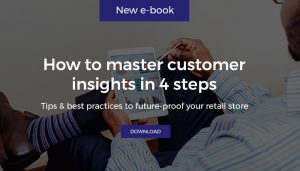A new year has come and it’s the most appropriate time for new resolutions. In 2022, brands and retailers have the chance to evaluate and optimize their relationships with the customers in the frame of a competitive market landscape. The most important is to prove their worth since today’s customers demand a totally fresh approach. Let’s dive into customers’ tendencies to be more specific and accurate.
Consumers are using diverse ways for shopping either online or offline, taking total control in creating their own ideal shopping experiences. Many of the shopping habits, that pandemic germinated, are here to stay, with consumers being accustomed to a fast, convenient, and personalized shopping journey, provided by all the different tools they use to shop. Brands should be alert and present to serve their needs at every point of their journey, physically, digitally, or combining physical and digital attributes into a hybrid experience.
Shoppers want it all simultaneously: the proximity feeling of store experience and the convenience of digital channels combined. They expect everything to be connected all the time and they blend these two experiences during their purchasing paths. For instance: the methods of buying in-store and shipping/delivering to home, buying online, and picking items up curbside, or finding the product online and shop it in-store.
And what’s more? Consumers also expect the brands to be fully aligned with their values, elevating their environmental ethics, and demanding more sustainable products and purchasing ways. They are digitally confident and purpose-driven, now more than ever.
According to an IBM global survey conducted in association with the American National Retail Federation (NRF) of more than 19,000 respondents across 28 countries, consumers of today mostly seek stores that are digitally enabled and support hybrid shopping journeys. Even though 72% of consumers rely on stores as part of their primary method, there is a notable average of consumers that demand hybrid methods. Hybrid shopping is the primary buying method for 27% of consumers and 36% of Gen Z—more than any other generation.
To fulfil consumers’ expectations, marketers need to adapt to the different circumstances, as consumers already did, and understand there’s no longer a distinction between physical and digital. That starts and ends with understanding their customers and what they really want. Thus, it’s vital for retailers and brands to use technology as a differentiator, reimagine the customer journey, add value throughout the entire interaction, and transmit consumers’ values through their products.
Actions to take:
• Brands should streamline their marketing plans and seamlessly integrate their digital and physical presence to deliver an ultimate shopping experience, leveraging each channels’ roles. To do so, businesses really need to invest in technology, using all the right digital tools in-store and adopting customer data platforms that enable a holistic customer view. In this way, brands can collect all the customer insights and transform them into valuable assets, knowing better their customers, their personal preferences, their favourite communication channels, the shopping journey they crave for.
• Elevate store associates as they continue playing a valuable role and educate them in order to become a supplemental source of knowledge, support, and engagement for customers when at the same time they could deliver all the environmental values and ethics that especially these days, customers are concerned about.
Always keep in mind that the most craved consumer experience begins with engagement but continues with the whole customer journey. Don’t miss the chance to download Qivos Whitepaper and learn everything you need to know about customer experience excellence through technology by clicking here.








